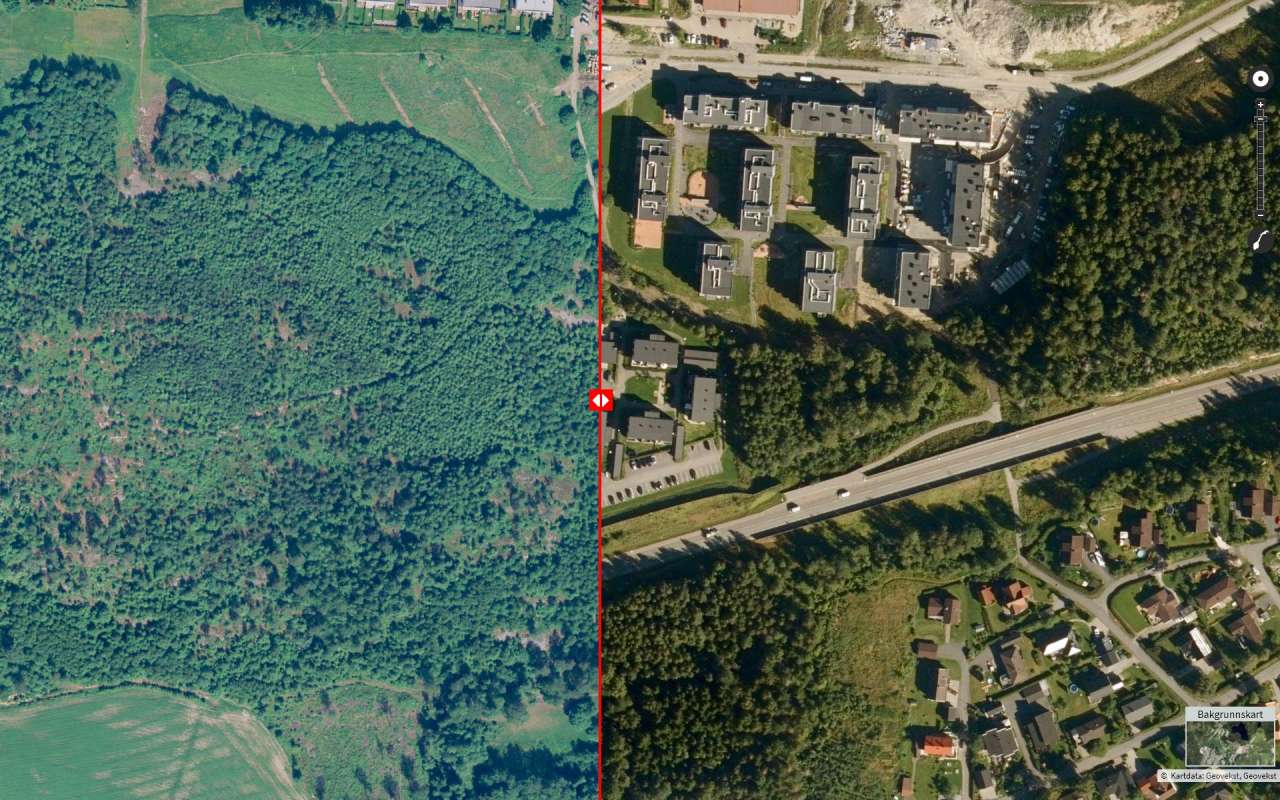Deforestation in Norway

Photo: NIBIO/Kilden
Norway is deforested by about 58 square km of forest each year, corresponding to 2.6 million metric tons of CO2 emissions.
The 2015 greenhouse gas report shows that deforestation is responsible for a significant proportion of Norway’s greenhouse gas emissions. Emissions from deforestation in 2015 were equivalent to double the emissions from domestic air traffic (1.3 million metric tons of CO2) and a quarter of the emissions from road traffic (10.3 million metric tons of CO2).
The Norwegian Environment Agency tasked NIBIO with investigating the scale of greenhouse gas emissions linked to deforestation. The goal of the
investigation is to increase understanding of Norway’s deforestation processes—the first step towards reducing resulting greenhouse gas
emissions.
A large proportion of deforestation in Norway occurs in the form of incremental expansions to existing infrastructure, such as new roads and buildings. At a local level, these small additions can seem inconsequential—
a new parking lot here, a couple of new houses there—but together they cover a significant amount of land.
Among the construction categories, roads and buildings were found to be responsible for the most deforestation. Residential and vacation homes came
out top among the types of buildings being constructed on deforested land.
About half of the emissions from deforestation result from the carbon that is sequestered in trees. Carbon stored in the earth makes up the other half, but is very difficult to measure.
All land area estimates and emission estimates are based on data from the National Forest Inventory.
Norway’s land is under a great deal of pressure. The population is growing, and increasing population density has implications for the natural landscape.
Topsoil must be protected; biodiversity and other ecosystem services need to be cared for.
Regardless of which measures are chosen to combat deforestation, it is important to carry out a comprehensive analysis of the consequences these measures could have. The measures must not lead to greater greenhouse gas emissions in other sectors, or contribute to “leakage” of deforestation to other countries.

